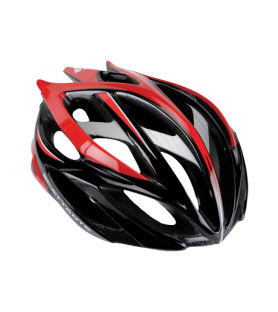
- Afrikaans
- Albanian
- Amharic
- Arabic
- Armenian
- Azerbaijani
- Basque
- Belarusian
- Bengali
- Bosnian
- Bulgarian
- Catalan
- Cebuano
- Corsican
- Croatian
- Czech
- Danish
- Dutch
- English
- Esperanto
- Estonian
- Finnish
- French
- Frisian
- Galician
- Georgian
- German
- Greek
- Gujarati
- Haitian Creole
- hausa
- hawaiian
- Hebrew
- Hindi
- Miao
- Hungarian
- Icelandic
- igbo
- Indonesian
- irish
- Italian
- Japanese
- Javanese
- Kannada
- kazakh
- Khmer
- Rwandese
- Korean
- Kurdish
- Kyrgyz
- Lao
- Latin
- Latvian
- Lithuanian
- Luxembourgish
- Macedonian
- Malgashi
- Malay
- Malayalam
- Maltese
- Maori
- Marathi
- Mongolian
- Myanmar
- Nepali
- Norwegian
- Norwegian
- Occitan
- Pashto
- Persian
- Polish
- Portuguese
- Punjabi
- Romanian
- Russian
- Samoan
- Scottish Gaelic
- Serbian
- Sesotho
- Shona
- Sindhi
- Sinhala
- Slovak
- Slovenian
- Somali
- Spanish
- Sundanese
- Swahili
- Swedish
- Tagalog
- Tajik
- Tamil
- Tatar
- Telugu
- Thai
- Turkish
- Turkmen
- Ukrainian
- Urdu
- Uighur
- Uzbek
- Vietnamese
- Welsh
- Bantu
- Yiddish
- Yoruba
- Zulu
Nov . 30, 2024 06:56 Back to list
Tips for Properly Adjusting the Rear Derailleur on Your Mountain Bike
How to Adjust a Mountain Bike Rear Derailleur
Adjusting a mountain bike rear derailleur is an essential skill for any bike enthusiast. Keeping your derailleur properly adjusted ensures smooth gear shifts, enhances pedaling efficiency, and extends the life of your drivetrain. Below, we’ll guide you through the steps to effectively adjust your rear derailleur.
Understanding the Rear Derailleur
Before diving into adjustments, it’s important to understand the function of the rear derailleur. This component is responsible for moving the chain between different gears on the cassette. It achieves this through a series of pulleys that guide the chain. To ensure efficient operation, the derailleur must be properly aligned and adjusted to the gear range.
Tools Required
To get started, gather the necessary tools - A Phillips screwdriver or a Torx driver (depending on your bike's components) - A 5mm Allen wrench (for some derailleur types) - A bike stand (optional but recommended) - A chain checker tool (to assess chain wear)
Preliminary Checks
Before adjusting the derailleur, check the following 1. Chain Condition Ensure your chain is not excessively worn. A worn chain can lead to poor shifting. 2. Cassette and Chainrings Inspect these for wear and replace if necessary. 3. Cable Tension Check if the derailleur cable is frayed or has slack. If it feels loose, it may need replacement or adjustment.
Step-by-Step Adjustment
how to adjust a mountain bike rear derailleur

1. Set the B-limit Screw The B-limit screw controls how close the derailleur can get to the cassette. With the chain on the largest chainring and the largest cog, check the gap between the derailleur’s jockey wheel and the cog. This gap should be about 5-6mm. Adjust the B-limit screw (often labeled “B”) to achieve the correct spacing.
2. Adjust the High Limit Screw With the chain on the smallest chainring and the smallest cog, check the position of the derailleur. The high limit screw (often labeled “H”) determines how far the derailleur can move towards the frame. Adjust this screw until the jockey wheel is aligned with the smallest cog.
3. Adjust the Low Limit Screw Shift to the largest chainring and the largest cog. The low limit screw (often labeled “L”) will restrict how far the derailleur can move towards the wheel. Ensure that the jockey wheel is still aligned with the largest cog and adjust the screw if necessary.
4. Adjust Cable Tension With the derailleur secured in the correct position, it’s time to adjust the cable tension. Shift to the middle gear and check if it shifts accurately. If it struggles, you may need to increase cable tension by turning the barrel adjuster (located on the derailleur or shifter) clockwise until the shifting improves. If it shifts too easily, you may need to loosen the tension by turning counter-clockwise.
5. Test Shifting Across Gears Shift through all gears to check for smooth transitions. Pay special attention to the shift from the smallest to the largest cog and vice versa. If shifts are sluggish or result in skipping, further cable tension adjustment may be necessary.
Final Checks
Once you have made the necessary adjustments, do a final inspection - Ensure the chain remains on the gears without dropping. - Check that there is no rubbing noise indicating misalignment. - Confirm that the derailleur moves smoothly through all gear combinations.
Conclusion
Learning how to adjust your mountain bike’s rear derailleur can significantly improve your riding experience. Not only will you enjoy smoother gear shifts, but you will also take better care of your bike's components. With practice, this procedure will become quick and intuitive, allowing you to enjoy longer rides without mechanical disruptions. Happy riding!
-
The Ultimate Kids' Four-Wheeler Experience
NewsJul.09,2025
-
The Ultimate Guide to Mountain Bikes: Gear Up for Your Ride
NewsJul.09,2025
-
The New Age of Cycling: Electric Bikes for Every Rider
NewsJul.09,2025
-
The Best Kids Bicycles: Ride in Style and Safety
NewsJul.09,2025
-
The Best 3-Wheel Scooters for Kids: Fun, Safety, and Adventure
NewsJul.09,2025
-
Revolutionize Your Ride: Affordable Electric Bikes
NewsJul.09,2025
-
Finding the Perfect Mountain Bike for Every Rider
NewsJul.09,2025



